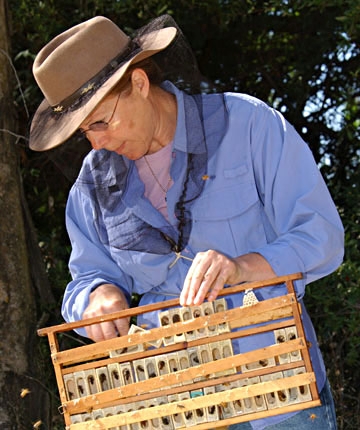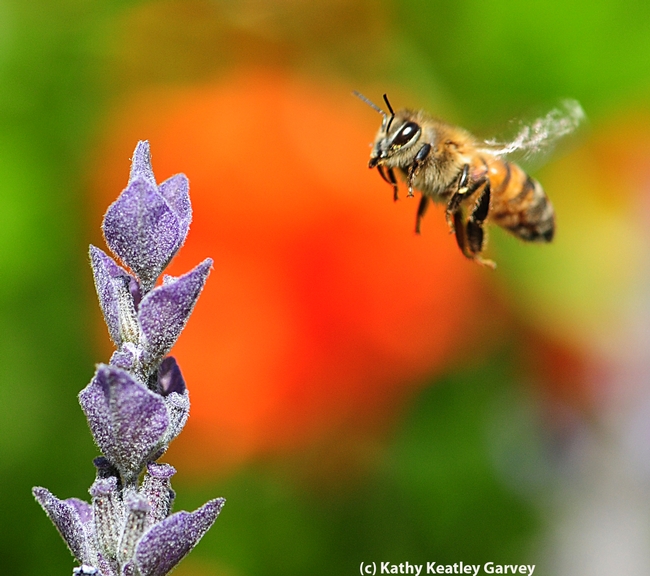
A team of scientists from UC Davis and Washington State University will be heading for Italy tomorrow (June 19) to gather germplasm (sperm) of Old World/Italian honey bee stock. They'll bring it back to the United States to inseminate bee queens.
Bee breeder-geneticist Susan Cobey, who has a joint appointment at UC Davis and WSU, will be in Italy with colleagues Walter "Steve" Sheppard, professor and chair of the WSU Department of Entomology, and Ph.D. student Brandon Hopkins of WSU. They're scheduled to return June 27.
Increasing the overall genetic diversity of honey bees may lead to healthier and hardier bees that can better fight off parasites, pathogens and pests, says Cobey, director of the Honey Bee Stock Improvement Program. Just as stock improvement has served the poultry, dairy and swine industries well, the beekeeping industry needs access “to stocks of origin or standardized evaluation and stock improvement programs.”
So, which honey bee did the European colonists introduce to America in 1622? It wasn't the Italian (blond) subspecies, now the most prevalent here. It was the dark subspecies (Apis mellifera mellifera), that made its way to the Jamestown colony (present-day Virginia) from England.
The Italian bees were not introduced into our country until 1859, records show.
"The American beekeeping pubic was enamored with the newly available yellow and relatively gentle bees," authors Cobey, Sheppard and David Tarpy wrote in a chapter of the newly published book, Honey Bee Colony Health: Challenges and Sustainable Solutions. "As a result, Italian-type honey bees form the basis for most present-day commercial beekeeping stocks in the U.S."
However, a genetic bottleneck resulted from the U.S. Honey Bee Act of 1922, which restricted further importation of Old World honey bees to prevent the introduction of the tracheal mite, Acarapis woodi.
The importation of germplasm from the Old World stock of the Italian subspecies could very well result in a better bee.
That's the plan. That's the hope. The trio wants to make it happen.
The UC Davis/WSU team will fan out to bee labs and to commercial beekeepers' apiaries and then deliver the germplasm to the WSU lab in Pullman, Wash., where they'll inseminate queen bees.
Cobey talked about the Stock Improvement Program at her May 2nd seminar presented to the UC Davis Department of Entomology. Based at the Harry H. Laidlaw Jr. Honey Bee Research Facility since 2007, she was trained by Laidlaw (1907-2003) himself. He's known as "the father of honey bee genetics."
If you access this web page, then click on the link at the top of the page below the headline, you can listen to Cobey's seminar.
Fascinating stuff.
Attached Images:
